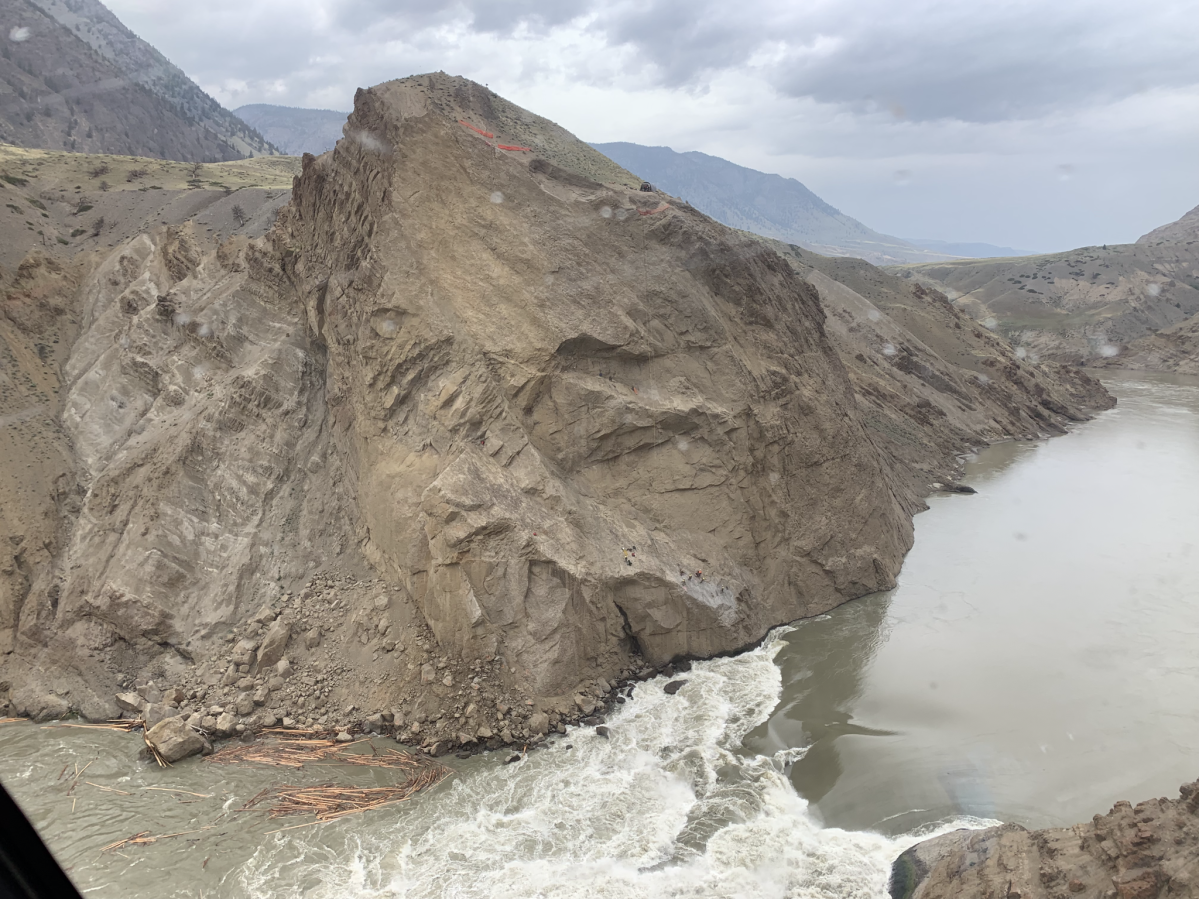About 56,000 fish have cleared a massive landslide on one of B.C.’s most critical salmon-bearing rivers, according to an update from government officials on Wednesday.

Crews have been working long hours to try and clear a natural passage past the slide in a remote area northwest of Kamloops, which was discovered in late June.
According to the unified federal-provincial-First Nations incident command, about 44,000 fish have been transported past the blockage by helicopter, while an additional 12,000 salmon managed to get past the obstruction on their own.
Crews have tagged several hundred Chinook and sockeye salmon with radio receivers. Officials said that technology has indicated some Chinook are making it past the obstruction, but has not recorded any sockeye making it through.
WATCH: More than 2 million salmon at risk due to Big Bar landslide

Environmental unit lead Michael Crowe said crews reached a milestone this week when they transported 3,000 salmon by helicopter in a single day. Fish are being collected using seine nets and a fish wheel, with a second fish wheel being assembled, he said.

Get daily National news
Both wheels will be operated by local First Nations.
The number of fish to clear the slide, however, remains a tiny fraction of the more than half a million salmon expected to migrate up the river to spawn this year.
READ MORE: Nearly 1,500 salmon being taken by helicopter past Fraser River landslide daily: DFO
Officials said it was too difficult to estimate how many fish may be currently trapped downstream.
The cost of the response to date has been about $6 million, according to the command.
WATCH: Rockslide causing concern for the future of salmon stock

Crowe said crews continue to try to expand a limited natural passage that’s been established in the river, allowing fish to get past a five-metre waterfall at the slide side.
READ MORE: Crews in B.C. helping salmon navigate Fraser River landslide
Crews are manipulating large rocks and doing low-velocity blasting to try and create a permanent, safe channel for fish.
He said crews have built a staging and work area at the bottom of the 150-metre canyon base, and are preparing to install segments of a fish ladder.
Work is also proceeding on a road through the area that would allow crews to transport fish in a five-tonne truck.
- Fulmer says B.C. Conservatives must be a grand coalition as he enters leadership race
- Victoria store owner frustrated with 911 services, says he’s been hung up on
- ‘It’s two worlds’: Bizarre Surrey shooting incident caught on video
- B.C. to undertake trade mission to India, a ‘key market’ for province, Eby says








Comments